#White History
Explore tagged Tumblr posts
Text

🤔
#blackmen#melaninpoppin#blackcouples#blackwomen#blacklove#blackfamily#blackfathers#melaninrich#marriedandblack#blackexcellence#black history#white history
229 notes
·
View notes
Text

#slavery#history#white history#american history#mario van peebles#whoopi goldberg#white supremacy#racism#social justice#equality#end hate#anti-racism#racial equality#stop racism#no to hate#dismantle racism
202 notes
·
View notes
Text
On June 26, 1844, the legislative committee of the territory then known as “Oregon Country” passed the first of a series of “Black exclusion” laws. The law dictated that free African Americans were prohibited from moving into Oregon Country and those who violated the ban could be whipped “not less than twenty nor more than thirty-nine stripes."
That December, the law was amended to substitute forced labor for whipping. It specified that African Americans who stayed within Oregon would be hired at public auction and that the “hirer” would be responsible for removing the “hiree” out of the territory after the prescribed period of forced service was rendered. This law was enforced even though slavery and involuntary servitude were illegal in Oregon Country.
The preamble to a later exclusion law, passed in 1849, explained legislators’ beliefs that “it would be highly dangerous to allow free Negroes and mulattoes to reside in the Territory, or to intermix with Indians, instilling ... feelings of hostility toward the white race.”
The Oregon Constitution of 1857 included racial exclusion provisions against African Americans and Asian Americans. The document declared that African Americans outside of Oregon were not permitted to “come, reside, or be within” the state; prohibited African Americans from owning property or performing contracts; and prescribed punishment for those who employed, “harbor[ed],” or otherwise helped African Americans.
Between 1840 and 1860, in the midst of this exclusion and discrimination, African Americans never constituted more than 1% of the population in the American Pacific Northwest. Oregon, which joined the Union as a "free state" on February 14, 1859, stands as a clear illustration that racial discrimination and oppression against Black people was also widespread in jurisdictions where slavery was illegal. The 2020 U.S. Census reported that only 3.2% of Oregon residents were Black.
#history#white history#us history#Black history#am yisrael chai#jumblr#republicans#democrats#slavery#Oregon Constitution of 1857#Oregon Constitution#Oregon
57 notes
·
View notes
Text
instagram
rent is due... OVERdue.
#end white supremacy#chickens coming home to roost#karma#black history#black people#black lives matter#blacklivesmatter#justice#poetic justice#africa#burkina faso#senegal#mali#palestine#indigenous#racial injustice#black women#black men#white history#american history#project 2025#maga#cointelpro#instagram#terrorism#middle east#police brutality#Instagram
28 notes
·
View notes
Text
Teaching White Supremacy

Teaching White Supremacy
CLICK THE TITLE TO DOWNLOAD THIS BOOK FROM THE BLACK TRUEBRARY
Donald Yacovone shows us the clear and damning evidence of white supremacy’s deep-seated roots in our nation’s educational system through a fascinating, in-depth examination of America’s wide assortment of texts, from primary readers to college textbooks, from popular histories to the most influential academic scholarship. Sifting through a wealth of materials from the colonial era to today, Yacovone reveals the systematic ways in which this ideology has infiltrated all aspects of American culture and how it has been at the heart of our collective national identity. Yacovone lays out the arc of America’s white supremacy from the country’s inception and Revolutionary War years to its nineteenth-century flashpoint of civil war to the civil rights movement of the 1960s and today’s Black Lives Matter. In a stunning reappraisal, the author argues that it is the North, not the South, that bears the greater responsibility for creating the dominant strain of race theory, which has been inculcated throughout the culture and in school textbooks that restricted and repressed African Americans and other minorities, even as Northerners blamed the South for its legacy of slavery, segregation, and racial injustice. A major assessment of how we got to where we are today, of how white supremacy has suffused every area of American learning, from literature and science to religion, medicine, and law, and why this kind of thinking has so insidiously endured for more than three centuries.
CLICK THE TITLE TO DOWNLOAD THIS BOOK FROM THE BLACK TRUEBRARY
#Teaching White Supremacy#white racism#american hate#homegrown hate#lies#hateful agenda#not history#white history#CLICK THE TITLE TO DOWNLOAD THIS BOOK FROM THE BLACK TRUEBRARY
11 notes
·
View notes
Text
Vkyyyy 😍😍😍
#100 days of productivity#nature#nct 127#nct dream#needlework#neil gaiman#niall horan#nike#newjeans#nasa#epl#that that type of ish that would lead to an episode of snapped or deadly women#asks open#sunday#white history#tiktok#twitter#xxxx
26 notes
·
View notes
Text
A Florida plantation that had slaves still stands today | wtsp.com
Tucked away on the side of a busy Manatee County road stands the vestige of a defining era in American history.
At its peak, the Gamble Plantation enslaved 190 men, women and children. Federal documents say they ranged in age from two months to 105 years old.
Their stories are not well known. In fact, few locals are even aware of a slave plantation in the Tampa Bay region.
Some historians say it's intentional.
A descendant says it's time for change.
Chandra's Gamble 'This is my history'
One of Chandra Carty's first visits to the Gamble Plantation was during her time as a high school student in Manatee County.
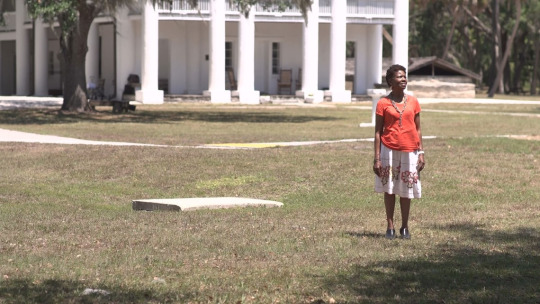

"We didn't call it a plantation, we called it a mansion. I didn't know it was a plantation until maybe, I don't know, 10, 15 years ago," Carty, who is in her 60s, said. "Growing up, this was a mansion. So, they obscured what really happened here."
Interstate signs leading to the site make no mention of a plantation — only a mansion. It's only upon arrival that a sign reads, "Judah P. Benjamin Confederate Monument" at Gamble Plantation State Historic Park.
"How would the word change from plantation?" Carty asked.
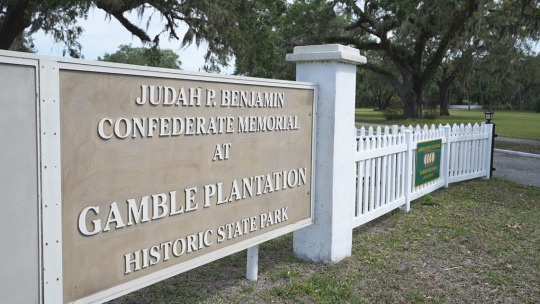
However, Carty's quest for more information about the Gamble Plantation goes beyond the name. A family research project revealed she has direct connections to the site. Her great-great grandmother, Mariah, married Nelson Burton, who was enslaved at the plantation.
"The Manatee County historical records show in 1872, two freed ex-slaves being married, and that's where our family history picks up," she said.
It's history Carty and others who study the site say is missing from the Gamble Plantation, which now as a state park focuses heavily on its Confederate themes and memorial to Confederate cabinet member Judah P. Benjamin. He served as Secretary of State to the Confederacy and stayed at the plantation for a brief time on his escape from the country at the end of the Civil War.
"To be in line with how contemporary historians, contemporary museums, anthropologists try to interpret these public heritage sites, there needs to be a significant push to foreground the stories of the enslaved laborers here," Dr. Diane Wallman, associate professor of anthropology at the University of South Florida, said.
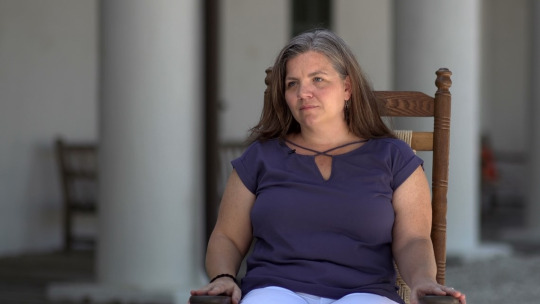
"As you know, somebody who studies history, and believes in, you know, the thorough and full telling of history, it makes me sad that the stories of particular people that lived here, died here, worked here, are not being told," she said.
Currently, there is little on the site that mentions the experiences of the enslaved. A visit to the plantation's information center does have a typewritten list of the names of all those enslaved. However, unlike other displays, there is no museum label to describe its significance.
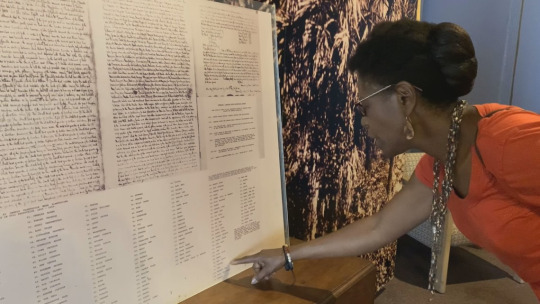
"I want to see when I go into the little information booth, to see the story of specific slaves, to see Nelson Burton's story, because life is a story," Carty said. "We need to tell the story the best that we can. Where did the slaves live? What did their day to day activity consist of?"
A big Gamble The rise and fall of the Gamble Plantation

In the early 1840s, Robert Gamble of Tallahassee, Fla., used slave labor to establish a sugar plantation on about 3,500 acres of land along the Manatee River.
Federal documents show he came to the area under the Florida Armed Occupation Act, which gave away 160 acres of land to settlers willing to develop the area and battle indigenous inhabitants.
According to paperwork filed with the National Park Service, those enslaved to Gamble lived in 57 slave cabins on the plantation. They are credited for the success of the plantation and sugar mill.
Unable to keep up with "natural disasters and a fickle sugar market," information from Florida State Parks says Gamble was driven into debt by 1856 and sold the plantation in 1859.
A path forward Reconciling past with present
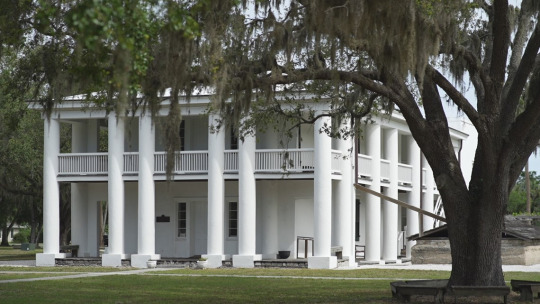
Documents filed with the National Park Service show in the 1920s, the United Daughters of the Confederacy purchased the Gamble Plantation mansion, restored it and made it a Confederate shrine.
10 investigates got records going back to the 1970s that show the UDC made an agreement with the state to limit the plantation's interpretation mostly to its Confederate themes.
When a state park leader proposed changes, he faced resistance.
"There was pushback from the state government level. There's letters from senators...supporting the UDC and folks and trying to keep this focused on the Confederacy Judah P. Benjamin and Robert Gamble," Wallman said. "it's come up in the 90s, it's come up again now, where we're trying to have these conversations about expanding the narrative here and making it more inclusive."

John Sims, the late Sarasota-based artist who based some of his last projects on reimagining parts of the Gamble Plantation said he would like to see a memorial to the enslaved at the site.
“The state should consider…funding and even through legislation being able to support efforts to memorialize the history of enslaved folks and their relationship to the various slave plantations in the state of Florida,” the late Sarasota-based artist John Sims told 10 Investigates’ Emerald Morrow before his death in December 2022.
“Let’s look at some of these former slave plantations as places that really belong to all of us, particularly descendants of African slaves who have occupied those spaces,” Sims said.
Requests for on-camera interviews with the Judah P. Benjamin chapter of the United Daughters of the Confederacy were denied, but member Evelyn Hoskins said she believes others will be open to doing more at the Gamble Plantation to honor the enslaved.
"We are all looking for answers," she said. "The slaves were just as much of the Gamble story as anyone else."
10 Investigates also reached out to the Florida Department of Environmental Protection, which oversees the Gamble Plantation Historic State Park. A spokesperson denied our request for an interview, but said in a statement:
"The Florida Park Service is committed to providing resource-based recreation while preserving, interpreting and restoring natural and cultural resources, and the agency strives to do this in a positive and appropriate manner.
"Our agency is always evaluating how we communicate Florida's unique history across all state parks, including at Gamble Plantation Historic State Park."
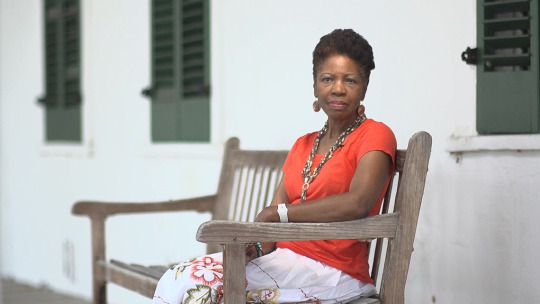
Carty remains optimistic. She said her focus’s is not on removing what’s at the site. Instead, she wants to include what’s missing.
"I just want the complete story because this is my history," Carty said. "Why would I tear down my history? Nelson had to build this? Why would I destroy?"
So, she's calling on the UDC, the state park, lawmakers and even the governor to push a more balanced version of history—one she never wants to be forgotten.
"I'm feeling hopeful," Carty said. "Hopeful that some I see the image of Nelson...the image of Mariah, and they say, 'job well done.' You finally got our story out so everybody can understand what it was like living here."
#florida#plantations#white history#white supremacy#florida history of enslavement of Black people#gamble plantation#florida parks service#manatee county
10 notes
·
View notes
Text
White privilege means not looking back at your people's history as a kid and reading about how your ancestors were hunted like animals (with government sanction) and had their ears made into necklaces that their murderers would wear to openly show off to people.
And these murderers were congratulated for slaughtering so many Indigenous people instead of being jailed for being serial killers.
#indigenous history#indigenous people#world history#white privilege#white history#brazilian history#brazil
19 notes
·
View notes
Quote
“The essential characteristic of a nation is that all its individuals must have many things in common,” wrote the 19th-century French scholar Ernest Renan. “And must have forgotten many things as well.” But is this really mere forgetfulness? Or something more deliberate? This is not the accidental, absent-minded misplacement of a fact. The transatlantic trade in human beings for profit doesn’t slip one’s mind, momentarily, like an elusive name or date. A nation does not forget centuries of slavery as a person might forget an umbrella. The nation sets about the task with great prejudice. After all, there are a good many things that predated this particular racial journey, from 1066 to the Wars of the Roses, that we do remember well.
Gary Younge in The Guardian. Lest We Remember: How Britain Buried Its History of Slavery
Slavery is a central and indisputable fact of the nation’s past. But our failure to remember what really happened is more than mere forgetfulness
14 notes
·
View notes
Text
The espousal of the doctrine of Negro inferiority by the South was primarily because of economic motives and the inter-connected political urge necessary to support slave industry; but to the watching world it sounded like the carefully thought out result of experience and reason; and because of this it was singularly disastrous for modern civilization in science and religion, in art and government, as well as in industry. The South could say that the Negro, even when brought into modern civilization, could not be civilized, and that, therefore, he and the other colored peoples of the world were so far inferior to the whites that the white world had a right to rule mankind for their own selfish interests. Never in modern times has a large section of a nation so used its combined energies to the degradation of mankind. The hurt to the Negro in this era was not only his treatment in slavery; it was the wound dealt to his reputation as a human being. Nothing was left; nothing was sacred; and while the best and more cultivated and more humane of the planters did not themselves always repeat the calumny, they stood by, consenting by silence, while blatherskites said things about Negroes too cruelly untrue to be the word of civilized men. Not only then in the forties and fifties did the word Negro lose its capital letter, but African history became the tale of degraded animals and sub-human savages, where no vestige of human culture found foothold.
W. E. B. Du Bois, Black Reconstruction in America
#black lives matter#white history#black history#critical race theory#black reconstruction in america#web du bois#w.e.b. du bois#du bois#1935#du bois 1935
2 notes
·
View notes
Text
instagram
#blackmen#melaninpoppin#blackcouples#blackwomen#blacklove#blackfamily#blackfathers#melaninrich#marriedandblack#blackexcellence#white history#black history#europe#Instagram
6 notes
·
View notes
Text



#rosa parks#white history#black history#us history#crt#racism#desantis#ron desantis#desanitise#florida#904#history#crimes against humanity#indoctrination stations#indoctrination
4 notes
·
View notes
Text
I'm still in disbelief. 10 to 15 million people didn’t cast a vote for president—not even for a third party. Some said they were tired or too principled, but even a protest vote for the Green Party—the “lesser of evils”—could have sent a strong message. Supporting the Green Party would have bolstered a platform that aligns with Democrats on LGBTQIA+ issues, the working class, and abortion rights, while also pushing for Medicare for All, DEI initiatives, workers' rights, and protections for children.
Trump the rapist is president of the United States of America.

#history#white history#us history#am yisrael chai#jumblr#republicans#black history#democrats#israel#palestine#Green Party#Donald Trump#Kamala Harris#Jill Stein#Claudia De la Cruz#biden#joe biden#jd vance
23 notes
·
View notes
Text
Rafael Edward "Ted" Cruz is a JOB CUTTING DEMON!!
That asshole wanted a government shutdown during Obama's term and got it. Ted Cruz cost 300 people (Lockheed Martin, USA, Cimarron, Boeing) to laid off.
I hope Rafael Edward "Ted" Cruz chokes on his food and no one around him knows the heimlich maneuver.
I can't speak to the other government industries, but Rafael Edward "Ted" Cruz did a number on ours.
Picture you're 2 years out of college. You land a great government job, you buy a house for your wife, you have a kid, and then you get the news you're being laid off due to a government shutdown. You can find a good paying job so you have to move to another country to work.
FUCK Rafael Edward "Ted" Cruz!!

#history#white history#us history#am yisrael chai#jumblr#republicans#black history#democrats#rafael edward cruz#ted cruz#jobs#job#job loss#shutdown#government shutdown#racist#self hating hispanic#white adjacent#self hating latinx#self hating
78K notes
·
View notes
Video
youtube
Slavery Is White History
"If you really want to learn about white history, you have to start with the history of slavery." America associates slavery with Black people, but Michael Harriot explains why slavery is more white history than Black history.
#youtube#Slavery Is White History#Michael Harriott#Black AF#the Grio#Black History#american racism#white history
11 notes
·
View notes
Text
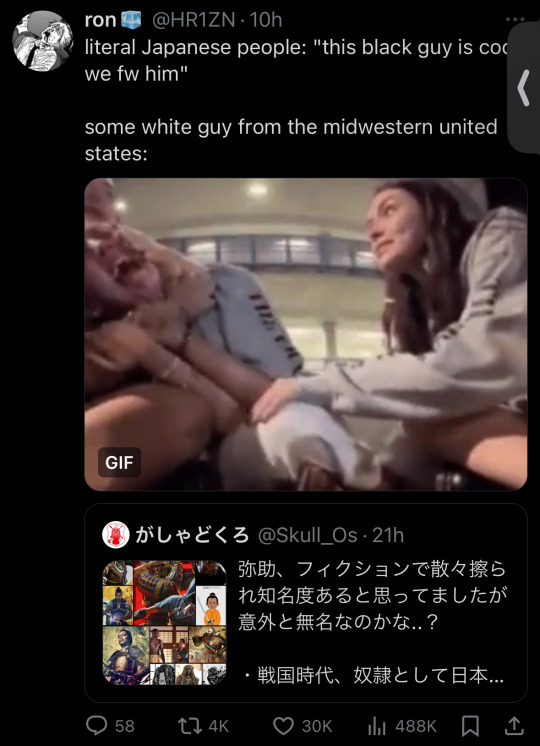
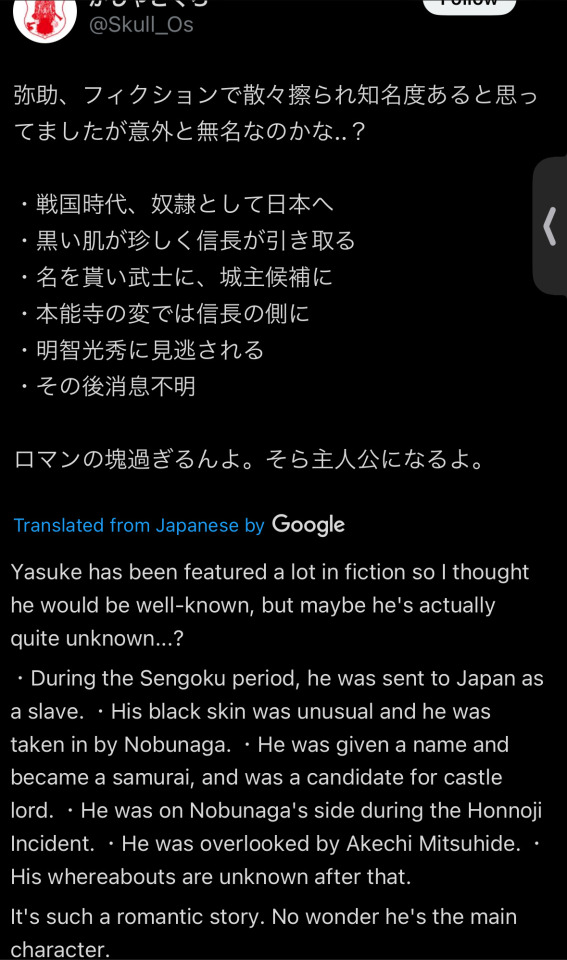

White people are miserable, racist losers period. They’ve even been getting mad at Japanese people for correcting them about Yasuke as well.
#rambling#seen wp go ‘they’re mismembering their history is all-‘#as if they’d know more than the actual Japanese people#comments on ever post about yasuke are full of racist wp arguing with Japanese ppl and telling them that yasuke was a ‘nobody slave’#while Japanese ppl are just like ‘well anyway-‘ on their asses it’s kind of embarrassing#the guy is literally an historical figure bro#how are you mad that everyone from a country that you have such an unhealthy interest in isn’t as racist as you are??? that’s what it’s#giving#I’m sure there are lots of Japanese ppl being racist af too#since antiblackness is global and everyone has a problem with black people simply existing but#they hate us too but 😭#it’s just#expect full blown kkk bullshit as soon as a black character pokes their head out from around the curtain#antiblackness#I see white ppl cry about yasuke every other month man#or at least once a year on Twitter
24K notes
·
View notes